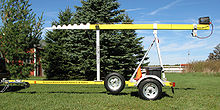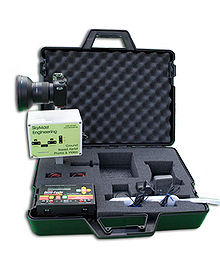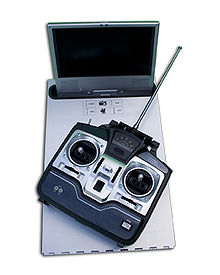- Mast photography
-
Mast Photography typically refers to Ground Based Aerial Photography, Telescopic Pole Photography or Elevated Photography. This type of system allows photographers to capture images from a "birds eye view".[1][2]

There are numerous applications for this type of photography, including...
- Residential Real Estate Agents
- Commercial Real Estate Brokers
- Land Developers and Commercial Developers
- Construction Companies- Finished Work and Progress Photos
- Insurance Companies- documenting damage after natural disasters
- Architects and Engineers
- Media and Marketing Companies
- Advertising Agencies
- Newspaper and Periodical Photography
- Police Accident Scenes
- Civic Events, Local Events, Festivals and Street Fairs
Four main components create a Mast Photography System- the telescoping mast, a high resolution digital camera, a remote control pan/tilt head and a ground control unit.
Telescoping masts come in various sizes ranging from 30' to over 100' and can be actuated mechanically or pneumatically. Mechanical masts rely on a series of simple pulleys and a 12volt electric winch to operate. Pneumatic systems incorporate a hand pump to pressurize the interior of the mast causing it to rise. Where speed of operation and portability are key components, masts can be mounted on a specialized trailer for easy transport. The trailer mounted system is quick to set up, since no assembly is required at the site. The mast pivots near its center of gravity, requiring very little effort to pivot it from the travel position to the vertical position for shooting. The masts can also be mounted on a large car or van and it is quite common for the larger masts to be attached to a 4x4 vehicle.
The remote control pan/tilt head allows the camera to be positioned wherever the operator desires by moving up/down and from side to side. Older model remote control systems had wires connecting the pan/tilt head and the ground control unit and have limited movement. Wireless technology now allows for completely wireless connections between these components using radio frequency controls and also allows for more precise control and a greater range of tilt control.
The ground control unit is the user interface. It allows the photographer to see exactly what the camera is focused on, control the position of the camera, zoom in and out, and to trigger the shutter.
References
Categories:- Photographic techniques
- Photography stubs
Wikimedia Foundation. 2010.




